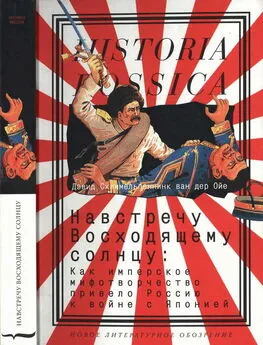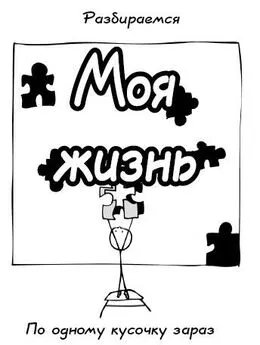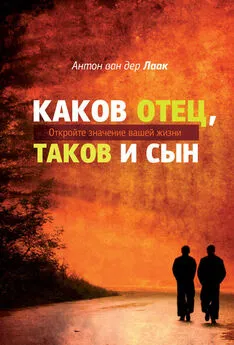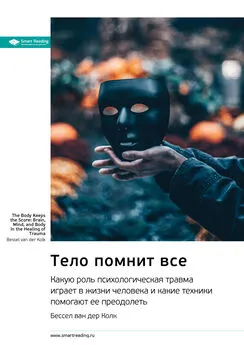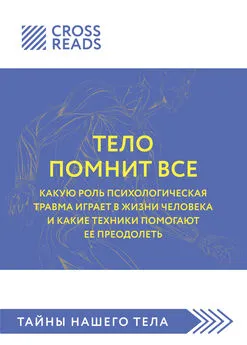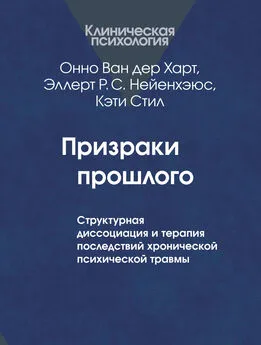Бессел ван дер Колк - Тело помнит все [Какую роль психологическая травма играет в жизни человека и какие техники помогают ее преодолеть]
- Название:Тело помнит все [Какую роль психологическая травма играет в жизни человека и какие техники помогают ее преодолеть]
- Автор:
- Жанр:
- Издательство:Литагент 5 редакция «БОМБОРА»
- Год:2019
- Город:Москва
- ISBN:978-5-04-099865-4
- Рейтинг:
- Избранное:Добавить в избранное
-
Отзывы:
-
Ваша оценка:
Бессел ван дер Колк - Тело помнит все [Какую роль психологическая травма играет в жизни человека и какие техники помогают ее преодолеть] краткое содержание
Доктор Бессел ван дер Колк, один из самых известных в мире специалистов по травме, провел более 30 лет, изучая посттравматическое стрессовое расстройство. Объединяя все исследования в области травмы, свой опыт и истории пациентов, в этой книге он объясняет, как травма буквально меняет тело и мозг, лишая переживших ее нормальной жизни, близких отношений и самоконтроля. Но есть и хорошие новости – автор расскажет, как мы можем помочь себе и своим близким в этой ситуации. Исследуя различные возможности исцеления: от медитации, йоги и спорта до занятий в театральных кружках – доктор Бессел предлагает новые пути к выздоровлению, активируя естественную нейропластичность мозга. Тем самым доктор дарит надежду на выздоровление и полноценную жизнь тем, кто столкнулся с травмой.
Внимание! Информация, содержащаяся в книге, не может служить заменой консультации врача. Перед совершением любых рекомендуемых действий необходимо проконсультироваться со специалистом.
Тело помнит все [Какую роль психологическая травма играет в жизни человека и какие техники помогают ее преодолеть] - читать онлайн бесплатно ознакомительный отрывок
Интервал:
Закладка:
16. J. C. Nemiah and P. E. Sifneos, “Psychosomatic Illness: A Problem in Communication”, Psychotherapy and Psychosomatics 18, no. 1–6 (1970): 154–60. См. также: G. J. Taylor, R. M. Bagby, and J. D. A. Parker, Disorders of Affect Regulation: Alexithymia in Medical and Psychiatric Illness (Cambridge, UK: Cambridge University Press, 1997).
17. A. R. Damasio, The Feeling of What Happens: Body and Emotion and the Making of Consciousness (New York: Random House, 2000), 28.
18. B. A. van der Kolk, “Clinical Implications of Neuroscience Research in PTSD”, Annals of the New York Academy of Sciences 1071, no. 1 (2006): 277–93. См. также: B. K. Hölzel, et al., “How Does Mindfulness Meditation Work? Proposing Mechanisms of Action from a Conceptual and Neural Perspective”, Perspectives on Psychological Science 6, no. 6 (2011): 537–59.
19. B. K. Hölzel, et al., “Mindfulness Practice Leads to Increases in Regional Brain Gray Matter Density”, Psychiatry Research: Neuroimaging 191, no. 1 (2011): 36–43. См. также: B. K. Hölzel, et al., “Stress Reduction Correlates with Structural Changes in the Amygdala”, Social Cognitive and Affective Neuroscience 5, no. 1 (2010): 11–17; and S. W. Lazar, et al., “Meditation Experience Is Associated with Increased Cortical Tickness”, NeuroReport 16 (2005): 1893–97.
Глава 17. Самоуправление
1. R. A. Goulding and R. C. Schwartz, The Mosaic Mind: Empowering the Tormented Selves of Child Abuse Survivors (New York: Norton, 1995), 4.
2. J. G. Watkins and H. H. Watkins, Ego States (New York: Norton, 1997). Юнг называет составные части личности архетипами и комплексами; в когнитивной психологии и литературе на тему диссоциативного расстройства личности они называются альтер-эго. См. также: J. G. Watkins and H. H. Watkins, “Theory and Practice of Ego State Therapy: A Short-Term Therapeutic Approach”, Short-Term Approaches to Psychotherapy 3 (1979): 176–220; J. G. Watkins and H. H. Watkins, “Ego States and Hidden Observers”, Journal of Altered States of Consciousness 5, no. 1 (1979): 3–18; and C. G. Jung, Lectures: Psychology and Religion (New Haven, CT: Yale University Press, 1960).
3. W. James, The Principles of Psychology (New York: Holt, 1890), 206.
4. C. Jung, Collected Works, vol. 9, The Archetypes and the Collective Unconscious (Princeton, NJ: Princeton University Press, 1955/ 1968), 330.
5. C. Jung, Collected Works, vol. 10, Civilization in Transition (Princeton, NJ: Princeton University Press, 1957/ 1964), 540.
6. Там же, стр. 133.
7. M. S. Gazzaniga, The Social Brain: Discovering the Networks of the Mind (New York: Basic Books, 1985), 90.
8. Там же, стр. 356.
9. M. Minsky, The Society of Mind (New York: Simon & Schuster, 1988), 51.
10. Goulding and Schwartz, Mosaic Mind , 290.
11. O. van der Hart, E. R. Nijenhuis, and K. Steele, The Haunted Self: Structural Dissociation and the Treatment of Chronic Traumatization (New York: W. W. Norton, 2006); R. P. Kluft, Shelter from the Storm (self-published, 2013).
12. R. Schwartz, Internal Family Systems Therapy (New York: Guilford Press, 1995).
13. Там же, стр. 34.
14. Там же, стр. 19.
15. Goulding and Schwartz, Mosaic Mind , 63.
16. Д.Д. Уоткинс, 1997, использует это в качестве примера персонифицированной депрессии: «Нам нужно знать, каков зрительный образ депрессии, и кто, с каким характером, от нее страдает».
17. Ричард Шварц, личное общение.
18. Goulding and Schwartz, Mosaic Mind , 33.
19. A. W. Evers, et al., “Tailored Cognitive-Behavioral Therapy in Early Rheumatoid Arthritis for Patients at Risk: A Randomized Controlled Trial”, Pain 100, no. 1–2 (2002): 141–53; E. K. Pradhan, et al., “Effect of Mindfulness-Based Stress Reduction in Rheumatoid Arthritis Patients”, Arthritis & Rheumatology 57, no. 7 (2007): 1134–42; J. M. Smyth, et al., “Effects of Writing About Stressful Experiences on Symptom Reduction in Patients with Asthma or Rheumatoid Arthritis: A Randomized Trial”, JAMA 281, no. 14 (1999): 1304–9; L. Sharpe, et al., “Long-Term Efficacy of a Cognitive Behavioral Treatment from a Randomized Controlled Trial for Patients Recently Diagnosed with Rheumatoid Arthritis”, Rheumatology (Oxford) 42, no. 3 (2003): 435–41; H. A. Zangi, et al., “A Mindfulness-Based Group Intervention to Reduce Psychological Distress and Fatigue in Patients with Inflammatory Rheumatic Joint Diseases: A Randomized Controlled Trial”, Annals of the Rheumatic Diseases 71, no. 6 (2012): 911–17.
Глава 18. Заполнение пустоты: создание структур
1. Pesso Boyden System Psychomotor. См.: http://pbsp.com/.
2. D. Goleman, Social Intelligence: The New Science of Human Relationships (New York: Random House Digital, 2006).
3. A. Pesso, “PBSP: Pesso Boyden System Psychomotor”, in Getting in Touch: A Guide to Body-Centered Therapies , ed. S. Caldwell (Wheaton, IL: Theosophical Publishing House, 1997); A. Pesso, Movement in Psychotherapy: Psychomotor Techniques and Training (New York: New York University Press, 1969); A. Pesso, Experience in Action: A Psychomotor Psychology (New York: New York University Press, 1973); A. Pesso and J. Crandell, eds., Moving Psychotherapy: Theory and Application of Pesso System/Psychomotor (Cambridge, MA: Brookline Books, 1991); M. Scarf, Secrets, Lies, and Betrayals (New York: Ballantine Books, 2005); M. van Attekum, Aan Den Lijve (Netherlands: Pearson Assessment, 2009); and A. Pesso, “The Externalized Realization of the Unconscious and the Corrective Experience”, in Handbook of Body-Psychotherapy / Handbuch der Körperpsychotherapie , ed. H. Weiss and G. Marlock (Stuttgart, Germany: Schattauer, 2006).
4. Luiz Pessoa and Ralph Adolphs, “Emotion Processing and the Amygdala: from a ‘Low Road’ to ‘Many Roads’ of Evaluating Biological Significance”. Nature Reviews Neuroscience 11, no. 11 (2010): 773–83.
Глава 19. Перестройка мозга: нейробиологическая обратная связь
1. H. H. Jasper, P. Solomon, and C. Bradley, “Electroencephalographic Analyses of Behavior Problem Children”, American Journal of Psychiatry 95 (1938): 641–58; P. Solomon, H. H. Jasper, and C. Braley, “Studies in Behavior Problem Children”, American Neurology and Psychiatry 38 (1937): 1350–51.
2. Мартин Тейчер из Гарвардской медицинской школы провел масштабное исследование, подтвердившее нарушения работы височных долей у взрослых, которые столкнулись с насилием в детстве: M. H. Teicher, et al., “The Neurobiological Consequences of Early Stress and Childhood Maltreatment”, Neuroscience & Biobehavioral Reviews 27, no. 1–2 (2003): 33–44; M. H. Teicher, et al., “Early Childhood Abuse and Limbic System Ratings in Adult Psychiatric Outpatients”, Journal of Neuropsychiatry & Clinical Neurosciences 5, no. 3 (1993): 301–6; M. H. Teicher, et al., “Sticks, Stones and Hurtful Words: Combined Effects of Childhood Maltreatment Matter Most”, American Journal of Psychiatry (2012).
3. Sebern F. Fisher, Neurofeedback in the Treatment of Developmental Trauma: Calming the Fear-Driven Brain (New York: Norton, 2014).
4. J. N. Demos, Getting Started with Neurofeedback (New York: W. W. Norton, 2005). См. также: R. J. Davidson, “Affective Style and Affective Disorders: Prospectives from Affective Neuroscience”, Cognition and Emotion 12, no. 3 (1998): 307–30; and R. J. Davidson, et al., “Regional Brain Function, Emotion and Disorders of Emotion”, Current Opinion in Neurobiology 9 (1999): 228–34.
5. J. Kamiya, “Conscious Control of Brain Waves”, Psychology Today , April 1968, 56–60. См. также: D. P. Nowlis, and J. Kamiya, “The Control of Electroencephalographic Alpha Rhythms Trough Auditory Feedback and the Associated Mental Activity”, Psychophysiology 6, no. 4 (1970): 476–84; and D. Lantz and M. B. Sterman, “Neuropsychological Assessment of Subjects with Uncontrolled Epilepsy: Effects of EEG Feedback Training”, Epilepsia 29, no. 2 (1988): 163–71.
6. M. B. Sterman, L. R. Macdonald, and R. K. Stone, “Biofeedback Training of the Sensorimotor Electroencephalogram Rhythm in Man: Effects on Epilepsy”, Epilepsia 15, no. 3 (1974): 395–416. Проведенный недавно метаанализ восьмидесяти семи исследований показал, что нейробиологическая обратная связь приводит к значительному уменьшению частоты судорожных приступов примерно у 80 процентов эпилептиков, прошедших обучение. Gabriel Tan, et al., “Meta-Analysis of EEG Biofeedback in Treating Epilepsy”, Clinical EEG and Neuroscience 40, no. 3 (2009): 173–79.
7. Это является частью того же самого контура самосознания, про который говорилось в пятой главе. Альваро Паскуаль-Леоне показал, как при временном отключении участка мозга над медиальной префронтальной корой с помощью транскраниальной магнитной стимуляции люди временно перестают узнавать себя в зеркале. J. Pascual-Leone, “Mental Attention, Consciousness, and the Progressive Emergence of Wisdom”, Journal of Adult Development 7, no. 4 (2000): 241–54.
8. http://www.eegspectrum.com/intro-to-neurofeedback/.
9. S. Rauch, et al., “Symptom Provocation Study Using Positron Emission Tomography and Script Driven Imagery”, Archives of General Psychiatry 53 (1996): 380–87. Три других исследования, в которых использовалась новая методика визуализации мозга под названием магнитоэнцефалография (МЭТ), показали, что люди с ПТСР страдают от повышенной активности правой височной коры: C. Catani, et al., “Pattern of Cortical Activation During Processing of Aversive Stimuli in Traumatized Survivors of War and Torture”, European Archives of Psychiatry and Clinical Neuroscience 259, no. 6 (2009): 340–51; B. E. Engdahl, et al., “Posttraumatic Stress Disorder: A Right Temporal Lobe Syndrome?” Journal of Neural Engineering 7, no. 6 (2010): 066005; A. P. Georgopoulos, et al., “The Synchronous Neural Interactions Test as a Functional Neuromarker for Posttraumatic Stress Disorder (PTSD): A Robust Classification Method Based on the Bootstrap”, Journal of Neural Engineering 7, no. 1 (2010): 016011.
Читать дальшеИнтервал:
Закладка:
![Обложка книги Бессел ван дер Колк - Тело помнит все [Какую роль психологическая травма играет в жизни человека и какие техники помогают ее преодолеть]](/books/1065979/bessel-van-der-kolk-telo-pomnit-vse-kakuyu-rol-ps.webp)


